China is destroying burial grounds where generations of Uighur families have been laid to rest, leaving behind human bones and broken tombs in what activists call an effort to eradicate the ethnic group’s identity in Xinjiang.
In just two years, dozens of cemeteries have been destroyed in the northwest region, according to an AFP investigation with satellite imagery analysts Earthrise Alliance.
Some of the graves were cleared with little care — in Shayar county, unearthed human bones were left discarded in three sites. In other sites tombs that were reduced to mounds of bricks lay scattered in cleared tracts of land.
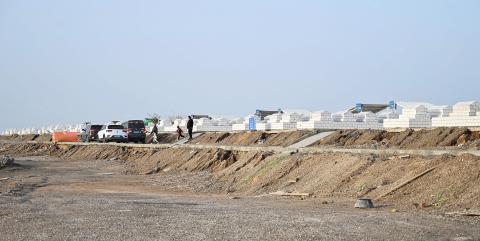
Photo: AFP
While the official explanation ranges from urban development to the “standardization” of old graves, overseas Uighurs say the destruction is part of a state crackdown to control every element of their lives.
“This is all part of China’s campaign to effectively eradicate any evidence of who we are, to effectively make us like the Han Chinese,” said Salih Hudayar, who said the graveyard where his great-grandparents were buried was demolished.
“That’s why they’re destroying all of these historical sites, these cemeteries, to disconnect us from our history, from our fathers and our ancestors,” he said.
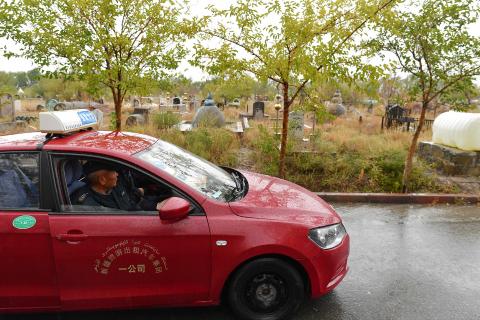
Photo: AFP
An estimated one million mostly Muslim ethnic minorities have been rounded up into re-education camps in Xinjiang in the name of combatting religious extremism and separatism.
Those who are free are subject to rigorous surveillance and restrictions — from home visits from officials to bans on beards and veils.
China has remained defiant despite escalating global criticism of its treatment of Uighurs. This week, the US said it would curb visas for officials over the alleged abuses and blacklisted 28 Chinese firms it accuses of rights violations.
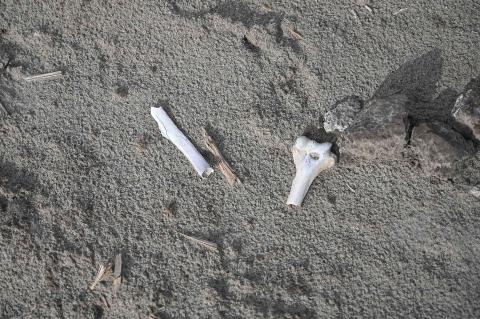
Photo: AFP
RELIGIOUS PERSECUTION
According to the satellite imagery, the Chinese government has, since 2014, exhumed and flattened at least 45 Uighur cemeteries — including 30 in the past two years.
The Xinjiang government did not respond to a request for comment.
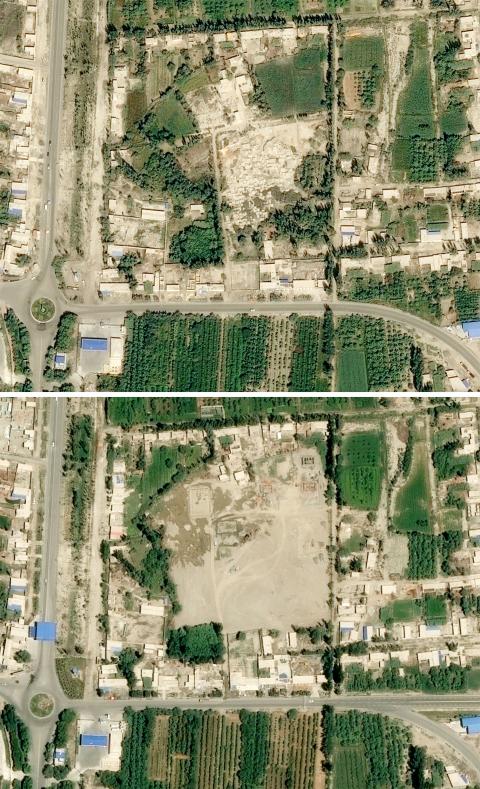
Photo: AFP
The destruction is “not just about religious persecution,” said Nurgul Sawut, who has five generations of family buried in Yengisar, southwestern Xinjiang.
“It is much deeper than that,” said Sawut, who now lives in Australia and last visited Xinjiang in 2016 to attend her father’s funeral. “If you destroy that cemetery ... you’re uprooting whoever’s on that land, whoever’s connected to that land,” she explained.
Even sites featuring shrines or the tombs of famous individuals were not spared.
In Aksu, local authorities turned an enormous graveyard where prominent Uighur poet Lutpulla Mutellip was buried into “Happiness Park,” with fake pandas, a children’s ride and a man-made lake.
Mutellip’s grave was like “a modern day shrine for most nationalist Uighurs, patriotic Uighurs,” recalled Ilshat Kokbore, who visited the tomb in the early 90s and now resides in the US.
The “Happiness Park” project saw graves moved to a new cemetery in an industrial zone out in the desert. The caretaker there said he had no knowledge of the fate of Mutellip’s remains.
The Aksu government could not be reached for comment.
DESTROYING HISTORY
In China, urban growth and economic development has laid waste to innumerable cultural and historic sites, from traditional hutong neighbourhoods in Beijing to segments of Dali’s ancient city wall in southwestern Yunnan province. It is an issue Beijing itself has acknowledged.
The government has also been criticized for its irreverence towards burial traditions outside of Xinjiang, including the destruction of coffins in central Jiangxi last year to force locals to cremate.
But activists and scholars say the clearances are especially egregious in Xinjiang, where they parallel the erasure of other cultural and spiritual sites — including at least 30 mosques and religious sites since 2017, an AFP investigation found in June.
“The destruction of the graveyards is very much part of the wider raft of policies that are going on,” said Rachel Harris, who researches Uighur culture at the School of Oriental and African Studies University of London.
“From the destruction of holy shrines, the tombs of saints, to the destruction of tombs of families, all of this is disrupting the relationship between people and their history, and the relationship between the people and the land that they live on,” she said.
The official explanation for cemetery removal or relocation varies by site.
In Urumqi, the regional capital, a cemetery near the international airport was cleared to make way for an urban “reconstruction” project.
In Shayar, where the local government has built new cemeteries near some of the old sites, an official said the program was aimed at “standardisation.”
A sign by a new cemetery in Shayar, which replaced a graveyard from the 18th century containing about 7,500 graves, echoed this statement.
The rebuilt sites “saved space, protected the ecosystem” and were “civilized,” it said.
“The new cemeteries are standardised, clean, and they’re convenient for residents,” Kadier Kasimu, deputy director of Shayar’s cultural affairs bureau, told AFP.
HUMAN REMAINS
Tamar Mayer, a professor of geosciences at Middlebury College, who researches Uighur shrines and cemeteries, described the new sites as homogenous and tightly packed.
Families, which traditionally leave gifts by the graves, no longer have “space to mourn,” she said, adding the policy seemed to be an attempt to “sanitize the area from Uighurs.”
Aziz Isa Elkun, a Uighur activist in Britain whose father was buried in one of the many destroyed cemeteries in Shayar, agreed: “If you want to build new graves then you can, but you do not need to destroy the old ones.”
The Shayar government did not respond to questions on the process of moving remains to new sites. But it is clear that human remains have been left behind in the process.
On a trip to Xinjiang in September, AFP visited 13 destroyed cemeteries across four cities and saw bones in at least three Shayar sites.
Local officials dismissed the evidence — one even picked up a bone, held it next to his right shin, and declared it “too big to be a human’s.”
But seven forensic anthropologists who saw images taken by AFP identified a number of human remains, including a femur, feet, hand bones and part of an elbow.
“There are a range of ages,” said Xanthe Mallett, a criminologist at the University of Newcastle.
In Hotan, southern Xinjiang, residents were given just two days to claim their dead, according to a government notice photographed by AFP in May.
“Any tombstone that was not claimed during the registration period will be relocated as an unclaimed corpse,” it read in Uighur.
“The owner of the tombstone is solely responsible for any consequences coming out of the failure in registration.”
ATTACKS ON UIGHUR CULTURE
The move to raze Uighur cemeteries is not new — satellite imagery shows destruction from more than a decade ago.
But while Uighurs and ethnic minorities are still exempt from certain policies like cremation, which goes against Islamic tradition, authorities appear to be hardening their stance, said Rian Thum, a Uighur history and culture expert at the University of Nottingham.
They used to have a “non-confrontational approach to Uighur culture, but now any policy that attacks Uighur culture seems to get a boost rather than put in check as their approach has changed,” said Thum.
The security crackdown in Xinjiang has also made it easier for authorities to ram through policies, said Tahir Hamut, a Uighur poet in the US who left Xinjiang in 2017.
“No one dares to speak up now,” he said. “No one raises demands with the government.”

June 2 to June 8 Taiwan’s woodcutters believe that if they see even one speck of red in their cooked rice, no matter how small, an accident is going to happen. Peng Chin-tian (彭錦田) swears that this has proven to be true at every stop during his decades-long career in the logging industry. Along with mining, timber harvesting was once considered the most dangerous profession in Taiwan. Not only were mishaps common during all stages of processing, it was difficult to transport the injured to get medical treatment. Many died during the arduous journey. Peng recounts some of his accidents in

What does the Taiwan People’s Party (TPP) in the Huang Kuo-chang (黃國昌) era stand for? What sets it apart from their allies, the Chinese Nationalist Party (KMT)? With some shifts in tone and emphasis, the KMT’s stances have not changed significantly since the late 2000s and the era of former president Ma Ying-jeou (馬英九). The Democratic Progressive Party’s (DPP) current platform formed in the mid-2010s under the guidance of Tsai Ing-wen (蔡英文), and current President William Lai (賴清德) campaigned on continuity. Though their ideological stances may be a bit stale, they have the advantage of being broadly understood by the voters.
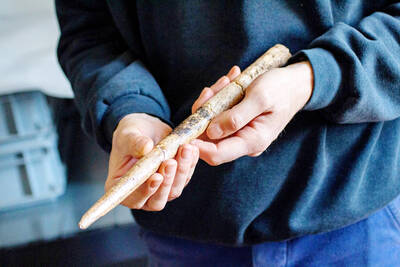
Artifacts found at archeological sites in France and Spain along the Bay of Biscay shoreline show that humans have been crafting tools from whale bones since more than 20,000 years ago, illustrating anew the resourcefulness of prehistoric people. The tools, primarily hunting implements such as projectile points, were fashioned from the bones of at least five species of large whales, the researchers said. Bones from sperm whales were the most abundant, followed by fin whales, gray whales, right or bowhead whales — two species indistinguishable with the analytical method used in the study — and blue whales. With seafaring capabilities by humans
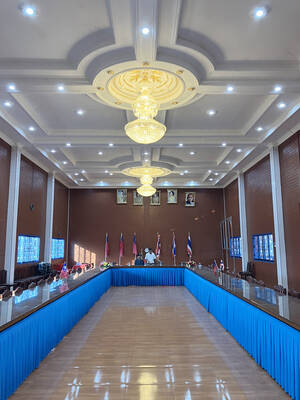
In a high-rise office building in Taipei’s government district, the primary agency for maintaining links to Thailand’s 108 Yunnan villages — which are home to a population of around 200,000 descendants of the Chinese Nationalist Party (KMT) armies stranded in Thailand following the Chinese Civil War — is the Overseas Community Affairs Council (OCAC). Established in China in 1926, the OCAC was born of a mandate to support Chinese education, culture and economic development in far flung Chinese diaspora communities, which, especially in southeast Asia, had underwritten the military insurgencies against the Qing Dynasty that led to the founding of